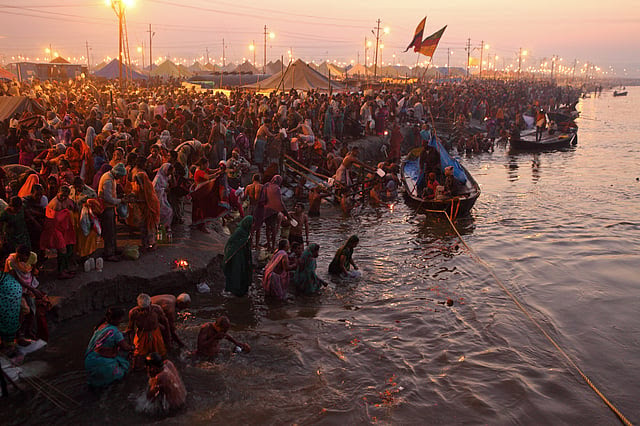Prayagraj: The National Green Tribunal (NGT) has issued a sharp reprimand to the Uttar Pradesh Pollution Control Board (UPPCB) over severe water pollution in the Ganges during the ongoing Maha Kumbh in Prayagraj. The tribunal, while reviewing a report from the Central Pollution Control Board (CPCB), accused UPPCB of failing to ensure safe water quality for millions of devotees taking the holy dip.
“You have made 500 million people bathe in polluted sewage water, water that was not fit for bathing, and people had to drink that water,” the NGT bench, led by Justice Prakash Srivastava, remarked during the February 16 hearing. The bench also questioned UPPCB’s delay in submitting a comprehensive pollution control report, hinting at external pressures influencing their actions.
According to the CPCB’s findings, water samples collected on January 12 and 23 from key locations—including Shringverpur Ghat, Lord Curzon Bridge, Shastri Bridge, Sangam, and the Old Naini Bridge—showed alarming levels of pollution. The report highlighted dangerously high biochemical oxygen demand (BOD) levels, exceeding the permissible limit of three milligrams per liter, particularly at Lord Curzon Bridge on January 19. Elevated BOD levels indicate increased organic waste, depleting oxygen in the water.
Additionally, excessive levels of faecal coliform bacteria were detected, signifying contamination from human and animal waste. Such pollution raises the risk of waterborne diseases like cholera, typhoid, and diarrhea. Despite these hazardous conditions, pilgrims continue to bathe in the river, unaware of the health risks.
A ground report by Down to Earth (DTE) confirmed that approximately 53 million liters per day (MLD) of untreated sewage is still being discharged into the Ganges. During the NGT hearing, the CPCB’s lawyer revealed that existing sewage treatment plants (STPs) are overwhelmed, operating beyond their capacity and unable to adequately treat wastewater.
On-site investigations by DTE further revealed that while some drains are being tapped for treatment, the processes remain either incomplete or ineffective. In several riverside villages, treated sewage water is being released into the Ganges and used for irrigation and religious rituals. One STP, located at Pong Ghat near the Ganges-Yamuna confluence, failed to meet even basic water treatment standards. The NGT questioned why the strict 2019 guidelines for STP operations had not been enforced, but UPPCB failed to provide a satisfactory response.
Expressing deep concern over UPPCB’s inaction, the NGT directed the pollution board to submit a detailed report on remedial measures. The next hearing on the matter has been postponed until further submissions are received.
With millions of devotees continuing to take ritual dips in the Ganges, the crisis raises urgent questions about water safety, environmental governance, and public health risks.




